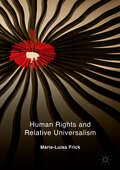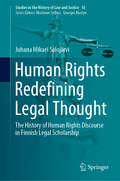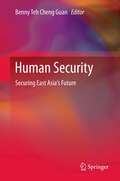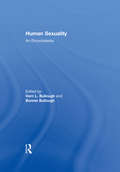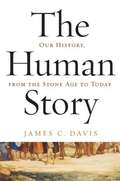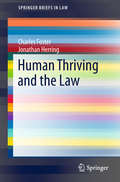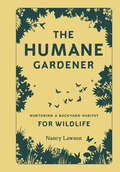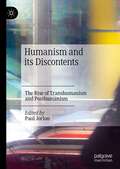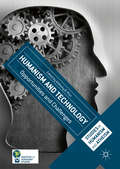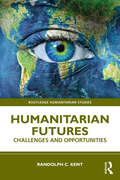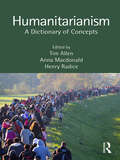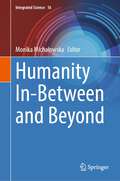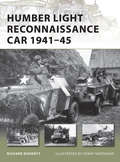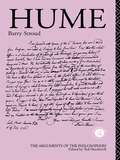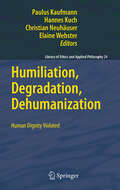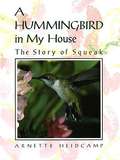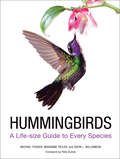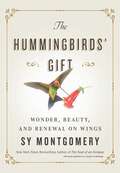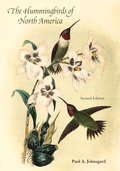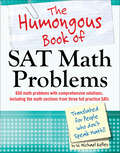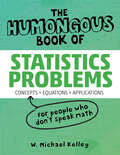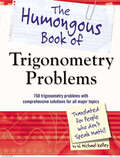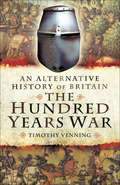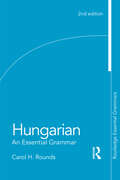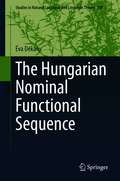- Table View
- List View
Human Rights and Relative Universalism
by Marie-Luisa FrickThis book argues that human rights cannot go global without going local. This important lesson from the winding debates on universalism and particularism raises intricate questions: what are human rights after all, given the dissent surrounding their foundations, content, and scope? What are legitimate deviances from classical human rights (law) and where should we draw “red lines”? Making a case for balancing conceptual openness and distinctness, this book addresses the key human rights issues of our time and opens up novel spaces for deliberation. It engages philosophical reasoning with law, politics, and religion and demonstrates that a meaningful relativist account of human rights is not only possible, but a sorely needed antidote to dogmatism and polarization.
Human Rights Redefining Legal Thought: The History of Human Rights Discourse in Finnish Legal Scholarship (Studies in the History of Law and Justice #16)
by Juhana Mikael SalojärviThis book investigates the origins and development of human rights discourse in Finnish legal scholarship in the twentieth century. It provides a detailed account of how human rights were understood before they had legal relevance in a positivist sense, how they were adapted to Finnish legal thinking in the post-Second World War decades, how they developed into a mode of legal rhetoric and a type of legal argument during the 1970s and 1980s, and how they eventually became a significant paradigm in legal thinking in the 1990s. The book also demonstrates how rights discourse infiltrated the discussion regarding problems that were previously addressed in arguments concerning morals, social justice and equity. Although the book focuses on the history of Finnish legal scholarship, it is also interesting from a global perspective for two reasons: Firstly, it demonstrates how an idea of international law is transplanted and diffused into national legal thinking; Finland is an illustrative example in this regard. Secondly, it offers insights into the general history of human rights.
Human Security: Securing East Asia's Future
by Benny Teh Cheng GuanHuman security is becoming increasingly pronounced in recent years due to changes in the security landscape of world politics. Yet, inter-state relations have continued to dominate security concerns in East Asia. This has, unfortunately, eluded the broader understanding of issues and challenges facing the peoples of East Asia. Home to nations with rapid economic growth and development, East Asia is at the core of what some individuals have termed as the coming Asian Century. Years of economic liberalization and exposure to globalization have permitted the region to achieve high levels of interconnectedness from within and without in unprecedented ways. This has certainly reduced state control and opened up spaces for cross-border human activities. While economic wealth have increased substantially over the years, it has also brought about bigger income disparities, unsustainable safety nets and a surge in social problems from health issues to migratory concerns that threaten the safety and well-being of individuals. Human Security: Securing East Asia's Future timely examines the fundamental issues causing human insecurities and evaluates the extent of which human security plays a role at the state and regional levels. Covering the different areas of threats to humans and applying case study materials, this volume provides an intellectual mix of perspectives that captures the relationship between people, state and region. This book will be of interest to those studying traditional and non-traditional security/threats, Asian human development and critical policy analysis.
Human Sexuality: An Encyclopedia (New Concepts In Human Sexuality Ser.)
by Vern L. Bullough Bonnie BulloughFirst Published in 1994. The purpose of an encyclopedia is to gather in one place information that otherwise would be difficult to find. Bring together a collection of articles that are authoritative and reflect a variety of viewpoints. The contributors come from a wide range of disciplines— from nursing to medicine, from biology to history— and include sociologists, psychologists, anthropologists, political scientists, literary specialists, academics and non-academics, clinicians and teachers, researchers and generalists.
The Human Story
by James C. DavisHas there ever been a history of the world as readable as this? In The Human Story, James C. Davis takes us on a journey to ancient times, telling how peoples of the world settled down and founded cities, conquered neighbors, and established religions, and continues over the course of history, when they fought two nearly global wars and journeyed into space. Davis's account is swift and clear, never dull or dry. He lightens it with pungent anecdotes and witty quotes. Although this compact volume may not be hard to pick up, it's definitely hard to put down. For example, on the death of Alexander the Great, who in a decade had never lost a single battle, and who had staked out an empire that spanned the entire Near East and Egypt, Davis writes: "When they heard how ill he was, the king's devoted troops insisted on seeing him. He couldn't speak, but as his soldiers -- every one -- filed by in silence, Alexander's eyes uttered his farewells. He died in June 323 B.C., at the ripe old age of thirty-two." In similar fashion Davis recounts Russia's triumph in the space race as it happened on an autumn night in 1957: "A bugle sounded, flames erupted, and with a roar like rolling thunder, Russia's rocket lifted off. It bore aloft the earth's first artificial satellite, a shiny sphere the size of a basketball. Its name was Sputnik, meaning 'companion' or 'fellow traveler' (through space). The watchers shouted, 'Off. She's off. Our baby's off!' Some danced; others kissed and waved their arms." Though we live in an age of many doubts, James C. Davis thinks we humans are advancing. As The Human Story ends, he concludes, "The world's still cruel; that's understood, / But once was worse. So far so good."
Human Thriving and the Law (SpringerBriefs in Law)
by Charles Foster Jonathan HerringThe idea of the Good Life – of what constitutes human thriving, is, implicitly, the foundation and justification of the law. The law exists to hold societies together; to hold in tension the rights of individuals as against individuals, the rights of individuals as against various types of non-humans such as corporations (and vice versa), and the rights of individuals individuals as against the state (and vice versa). In democratic states, laws inhibit some freedoms in the name of greater, or more desirable freedoms. The only justification for law is surely that it tends to promote human thriving. But what is the Good Life? What does it mean to live a thriving life? There has been no want of discussion, at least since the great Athenians. But surprisingly, since human thriving is its sole raison d’etre, the law has been slow to contribute to the conversation. This book aims to start and facilitate this conversation. It aims to: -make lawyers ask: ‘What is the law for?’, and conclude that it is to maximise human thriving -make lawyers ask: ‘But what does human thriving mean?’ -make judges and advocates ask: ‘How can a judgment about the best interests of a patient be satisfactory unless its basis is made clear?’
The Humane Gardener: Nurturing a Backyard Habitat for Wildlife
by Nancy LawsonIn this eloquent plea for compassion and respect for all species, journalist and gardener Nancy Lawson describes why and how to welcome wildlife to our backyards. Through engaging anecdotes and inspired advice, profiles of home gardeners throughout the country, and interviews with scientists and horticulturalists, Lawson applies the broader lessons of ecology to our own outdoor spaces. Detailed chapters address planting for wildlife by choosing native species; providing habitats that shelter baby animals, as well as birds, bees, and butterflies; creating safe zones in the garden; cohabiting with creatures often regarded as pests; letting nature be your garden designer; and encouraging natural processes and evolution in the garden. The Humane Gardener fills a unique niche in describing simple principles for both attracting wildlife and peacefully resolving conflicts with all the creatures that share our world.
Humanism and its Discontents: The Rise of Transhumanism and Posthumanism
by Paul JorionThis book explains that while posthumanism rose in opposition to the biblical contention that ‘Man was created in the image of God’, transhumanism ascertained the complementary view that ‘Man has been assigned dominion over all creatures’, further exploring a path that had been opened up by the Enlightenment’s notion of human perfectibility.It explains also how posthumanism and transhumanism relate to deconstruction theory, and on a broader level to capitalism, libertarianism, and the fight against human extinction which may involve trespassing the boundary of the skin, achieving individual immortality or dematerialization of the Self and colonisation of distant planets and stars.Two authors debate about truth and reason in today’s world, the notion of personhood and the legacy of the Nietzschean Superhuman in the current varieties of anti-humanism.
Humanism and Technology: Opportunities and Challenges (Studies in Humanism and Atheism)
by Anthony B. PinnThis book interrogates the ways in which new technological advances impact the thought and practices of humanism. Chapters investigate the social, political, and cultural implications of the creation and use of advanced forms of technology, examining both defining benefits and potential dangers. Contributors also discuss technology’s relationship to and impact on the shifting definitions we hold for humankind. International and multi-disciplinary in nature and scope, the volume presents an exploration of humanism and technology that is both racially diverse and gender sensitive. With great depth and self-awareness, contributors offer suggestions for how humanists and humanist organizations might think about and relate to technology in a rapidly changing world. More broadly, the book offers a critical humanistic interrogation of the concept of “progress” especially as it relates to technological advancement.
Humanitarian Futures: Challenges and Opportunities (Routledge Humanitarian Studies)
by Randolph C. KentHumanitarian Futures: Challenges and Opportunities explores the increasing types, dimensions and dynamics of crises threatening the world in the twenty-first century, and argues that those with humanitarian roles and responsibilities can only meet such challenges if their approaches to strategic and operational planning undergo fundamental paradigmatic shifts. Strategically and operationally, such shifts must begin by planning from the future, for the future.Author Randolph C. Kent, the UN’s first Humanitarian Coordinator, with experience in some of the most complex crises of modern times, including Rwanda, Ethiopia, Kosovo, Sudan and Somalia, provides a blueprint for dealing with ever greater complexity on planet Earth and beyond. That blueprint is not about upgrading existing tools or relying upon tried precedence. Rather, it points to a new paradigm for meeting crises. It begins by looking at the changing nature of humanness and governance, and then turns to plausible future crises based on such changes, before concluding with practical steps for dealing with ever more complex humanitarian threats, now and in the future.This book will be an essential read for humanitarian policymakers and practitioners as well as for humanitarian and global studies researchers and students who are and want to be engaged in understanding and preparing for ever more complex and unpredictable humanitarian challenges.
Humanitarianism: A Dictionary of Concepts
by Tim Allen Anna Macdonald Henry RadiceThe field of humanitarianism is characterised by profound uncertainty, by a constant need to respond to the unpredictable, and by concepts and practices that often defy simple or straightforward explanation. Humanitarians often find themselves not just engaged in the pursuit of effective action, but also in a quest for meaning. That is the starting point for this book. Humanitarian action has in recent years confronted geopolitical challenges that have upended much of its conventional modus operandi and presented threats to its foundational assumptions and legal frameworks. The critical interrogation of the purpose, practice and future of humanitarian action has yielded a rich new field of enquiry, humanitarian studies, and many thoughtful books, articles and reports. So, the question arose as to the most useful way to provide a critical overview that might serve to bring some definitional clarity as well as analytical rigor to the waves of critique and shifting sands of humanitarian action. Humanitarianism: A Dictionary of Concepts provides an authoritative analysis that attempts to rethink, rather than merely problematize or define the issues at stake in contemporary humanitarian debates. It is an important moment to do so. Just about every tenet of humanitarianism is currently open to question as never before.
Humanity In-Between and Beyond (Integrated Science #16)
by Monika MichałowskaThis volume discusses the definitional problems and conceptual strategies involved in defining the human. By crossing the boundaries of disciplines and themes, it offers a transdisciplinary platform for exploring the new ideas of the human and adjusting to the dynamic in which we are plunged. The emerging cyborgs and transhumans call for an urgent reconsideration of humans as individuals and collectives. The identity of the human in the 21st century eludes definitions underpinned by simplifying and simplified dichotomies. Affecting all the spheres of life, the discoveries and achievements of recent decades have challenged the bipolar categorizations of human/nonhuman and human/machine, real/virtual and thus opened the door to transdisciplinary considerations. Ours is a new world where the boundaries of normality and abnormality, a legacy of the long history of philosophy, medicine, and science need dismantling. We are now on our way to re-examine, re-understand, and re-describe what normal-abnormal, human-nonhuman, and I-we-they mean. We find ourselves facing what resembles the liminal stage of a global ritual, a stage of being in-between—between the old anthropocentric order and a new position of blurred boundaries. The volume addresses philosophical, bioethical, sociological, and cognitive approaches developed to transcend the binaries of human-nonhuman, natural-artificial, individual-collective, and real-virtual.
Humber Light Reconnaissance Car 1941-45
by Henry Morshead Richard DohertyThe iconic vehicle of the British Army's Reconnaissance Corps during World War II, the Humber Light Reconnaissance Car (LRC) saw service in several theatres of war between 1941 and 1945. The Humber LRC gave excellent service to the Reconnaissance Corps with its agility, speed and height proving to be invaluable assets to the units that operated it. Using numerous photographs, and newly commissioned artwork, this book looks at the development of the LRC, its use by the Reconnaissance Corps and its importance to British infantry divisions in the theater in which it served.
Hume-Arg Philosophers: Critical Essays On Locke, Berkeley, And Hume (Colección Filosofía Contemporánea Ser.)
by Barry StroudFirst published in 1999. Routledge is an imprint of Taylor & Francis, an informa company.
Humiliation, Degradation, Dehumanization
by Hannes Kuch Elaine Webster Paulus Kaufmann Christian NeuhaeuserDegradation, dehumanization, instrumentalization, humiliation, and nonrecognition - these concepts point to ways in which we understand human beings to be violated in their dignity. Violations of human dignity are brought about by concrete practices and conditions; some commonly acknowledged, such as torture and rape, and others more contested, such as poverty and exclusion. This volume collates reflections on such concepts and a range of practices, deepening our understanding of human dignity and its violation, bringing to the surface interrelationships and commonalities, and pointing to the values that are thereby shown to be in danger. In presenting a streamlined discussion from a negative perspective, complemented by conclusions for a positive account of human dignity, the book is at once a contribution to the body of literature on what dignity is and how it should be protected as well as constituting an alternative, fresh and focused perspective relevant to this significant recurring debate. As the concept of human dignity itself crosses disciplinary boundaries, this is mirrored in the unique range of perspectives brought by the book's European and American contributors - in philosophy and ethics, law, human rights, literature, cultural studies and interdisciplinary research. This volume will be of interest to social and moral philosophers, legal and human rights theorists, practitioners and students.
A Hummingbird in My House
by Arnette HeidcampAnyone who has fallen under the spell of the hummingbird will treasure this lovable true story of a young ruby-throated hummingbird who becomes part of someone's household and life. 57 full-color photographs; 10 black-and-white drawings.From the Hardcover edition.
Hummingbirds: A Life-size Guide to Every Species
by Michael Fogden Marianne Taylor Sheri L. Williamson“Packed with information . . . this book showcases species such as the Green-crowned Brilliant, the Fiery Topaz and . . . Cuban Bee Hummingbird.” —Daily MailHummingbirds have always held popular appeal, with their visual brilliance, extraordinary flight dexterity, jewel-like color, and remarkably small size.This is the first book to profile all 338 known species, from the Saw-billed Hermit to the Scintillant Hummingbird.Every bird is shown life-size in glorious full-color photographs.Every species profile includes a flight map and key statistics, as well as information about behavior, plumage, and habitat.This authoritative guide has been annotated by the world’s leading experts on hummingbirds and features a foreword by renowned birding author Pete Dunne.
The Hummingbirds' Gift: Wonder, Beauty, and Renewal on Wings
by Sy MontgomeryFrom the beloved New York Times bestselling author of the &“fascinating…entertaining&” (The Daily Beast) National Book Award finalist The Soul of an Octopus, a charmingly perfect gem of a book about the most exquisite and extraordinary of winged creatures—hummingbirds.As one of the most beautiful and intriguing birds found in nature, hummingbirds fascinate people around the world. The lightest birds in the sky, hummingbirds are capable of incredible feats, such as flying backwards, diving at speeds of sixty-one MPH, and beating their wings more than sixty times a second. Miraculous creatures, they are also incredibly vulnerable when they first emerge from their eggs. That&’s where Brenda Sherburn comes in. With tenderness and patience, she rescues abandoned hummingbirds and nurses them back to health until they can fly away and live in the wild. In The Hummingbird&’s Gift, the extraordinary care that Brenda provides her peanut-sized patients is revealed and, in the process, shows us just how truly amazing hummingbirds are. With Sy Montgomery&’s signature &“joyful passion&” (Library Journal), and including sixteen pages of gorgeous color photos, this beautifully written and inspiring little book celebrates the profound gift that hummingbirds are to our planet and is the ultimate gift for nature lovers and bird watchers everywhere.
The Hummingbirds of North America, Second Edition
by Paul A. JohnsgardSwift and iridescent, hummingbirds are found only in the New World, and encompass an amazing variety of specializations. No other family of birds can lay claim to so many superlatives, including smallest size, most rapid wingbeat, and most specialized plumages. While many species can be attracted to feeding stations and backyard flower gardens, others can be found only in the wild.Paul A. Johnsgard's Hummingbirds of North America is the only book devoted to the identification, distribution, and biology -- both individual and comparative -- of all hummingbirds that breed in North America. First published in 1983, this acclaimed volume now has been revised and expanded to include twenty-five Mexican species, such as the long-billed starthroat and the fork-tailed emeralds, thereby more than doubling the species coverage of the original edition. Full species-by-species accounts survey the evolutionary history, anatomical and physiological specializations, and comparative ecology, behavior, and reproductive biology of this largest family of nonpasserine birds. Individual accounts are complemented by 24 full-color paintings.Including updated range maps, identification keys, and a bibliography that has been broadened to include literature on the little-known Mexican species, the book is both accessible to amateur birders and an authoritative volume for ornithologists.
The Humongous Book of SAT Math Problems: 750 Math Problems with Comprehensive Solutions for the Math Portion of the SAT (Humongous Books)
by W. Michael KelleyTranslating math for people who don't speak math! The Humongous Book of SAT Math Problems takes a typical SAT study guide of solved math problems and provides easy-to-follow margin notes that add missing steps and simplify the solutions, thereby better preparing students to solve all types of problems that appear in both levels of the SAT math exam. Award-winning teacher W. Michael Kelley offers 750 problems with step-by-step notes and comprehensive solutions. The Humongous Books are like no other math guide series!
The Humongous Book of Statistics Problems (Humongous Books)
by Robert Donnelly W. Michael KelleyLearn to solve statistics problems—and make them no problem! Most math and science study guides are dry and difficult, but this is the exception. Following the successful The Humongous Books in calculus and algebra, bestselling author Mike Kelley takes a typical statistics workbook, full of solved problems, and writes notes in the margins, adding missing steps and simplifying concepts and solutions. By learning how to interpret and solve problems as they are presented in statistics courses, students prepare to solve those difficult problems that were never discussed in class but are always on exams. There are also annotated notes throughout the book to clarify each problem—all guided by an author with a great track record for helping students and math enthusiasts. His website (calculus-help.com) reaches thousands of students every month.
The Humongous Book of Trigonometry Problems: 750 Trigonometry Problems with Comprehensive Solutions for All Major Topics (Humongous Books)
by W. Michael KelleyBecome a trig master in no time!Most math and science study guides are a reflection of the college professors who write them: dry, difficult, and pretentious. The Humongous Book of Trigonometry Problems is the exception. Author Mike Kelley has taken what appears to be a typical trigonometry workbook, chock full of solved problems—more than 750!—and made notes in the margins adding missing steps and simplifying concepts and solutions, so what would be baffling to students is made perfectly clear. No longer will befuddled students wonder where a particular answer came from or have to rely on trial and error to solve problems. And by learning how to interpret and solve problems as they are presented in a standard trigonometry course, students become fully prepared to solve those difficult, obscure problems that were never discussed in class but always seem to find their way onto exams.
The Hundred Years War: The Hundred Years War (An Alternative History of Britain)
by Timothy VenningContinuing his exploration of the alternative paths that British history might so easily have taken, Timothy Venning turns his attention to the Hundred Years War between England and France. Could the English have won in the long term, or, conversely, have been decisively defeated sooner? Among the many scenarios discussed are what would have happened if the Black Prince had not died prematurely of the Black Death, leaving the 10-year-old Richard to inherit Edward IIIs crown. What would have been the consequences if France's Scottish allies had been victorious at Neville's Cross in 1346, while most English forces were occupied in France? What if Henry V had recovered from the dysentery that killed him at 35, giving time for his son Henry VI to inherit the combined crowns of France and England as a mature (and half-French) man rather than an infant controlled by others? And what if Joan of Arc had not emerged to galvanize French resistance at Orleans? While necessarily speculative, all the scenarios are discussed within the framework of a deep understanding of the major driving forces, tensions and trends that shaped British history and help to shed light upon them. In so doing they help the reader to understand why things panned out as they did, as well as what might have been in this fascinating period that still arouses such strong passions on both sides of the Channel.
Hungarian: The Complete Course For Beginners (Routledge Essential Grammars)
by Carol RoundsHungarian: An Essential Grammar is a concise, user-friendly guide to the most important structures of this fascinating language. All students of Hungarian, whether beginners or at intermediate and advanced levels, will welcome its clarity of presentation and jargon-free explanations. It is ideal for those studying independently or following a taught course. Topics include: verbal prefixes aspect and tense word-formation mechanisms vowel harmony the case system and its uses word order appendices include the formation of irregular verbs, complete noun declensions and irregular noun patterns With numerous language examples bringing grammar to life, this truly essential reference work will prove invaluable to all students looking to master the patterns and irregularities of modern Hungarian.
The Hungarian Nominal Functional Sequence (Studies in Natural Language and Linguistic Theory #100)
by Éva DékányThe Hungarian Nominal Functional Sequence combines the methods of syntactic cartography with evidence from compositional semantics in a comprehensive exploration of the structure of Noun Phrases. Proceeding from the lexical core to the top of DP, it uses Hungarian as a window on the underlying universal functional hierarchy of Noun Phrases, but it also regularly complements and supports the analysis with cross-linguistic evidence. The book works out a minimal map of the extended NP in the sense that the proposed hierarchy only has projections which host overt material and it does not draw on semantically empty word order projections. Topics which receive special attention include the syntax of classifiers, demonstratives, proper names, possessive NPs and plural pronouns.
